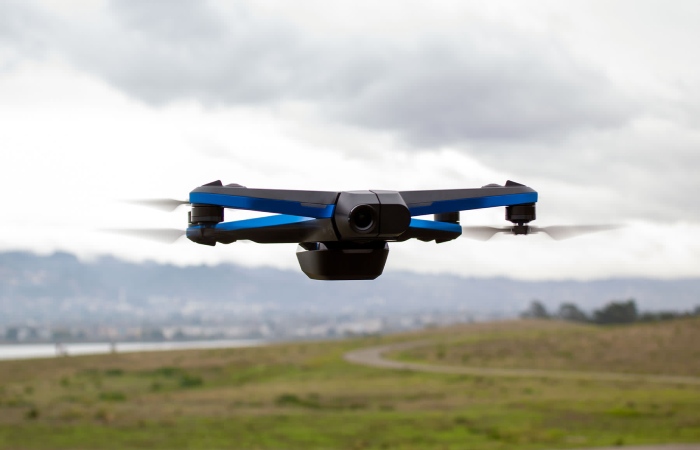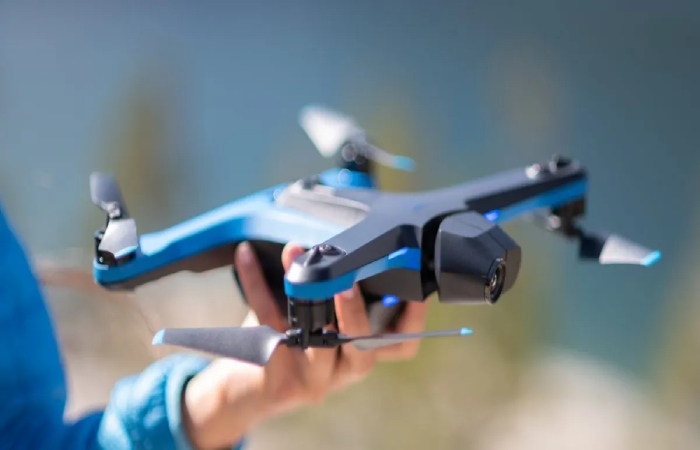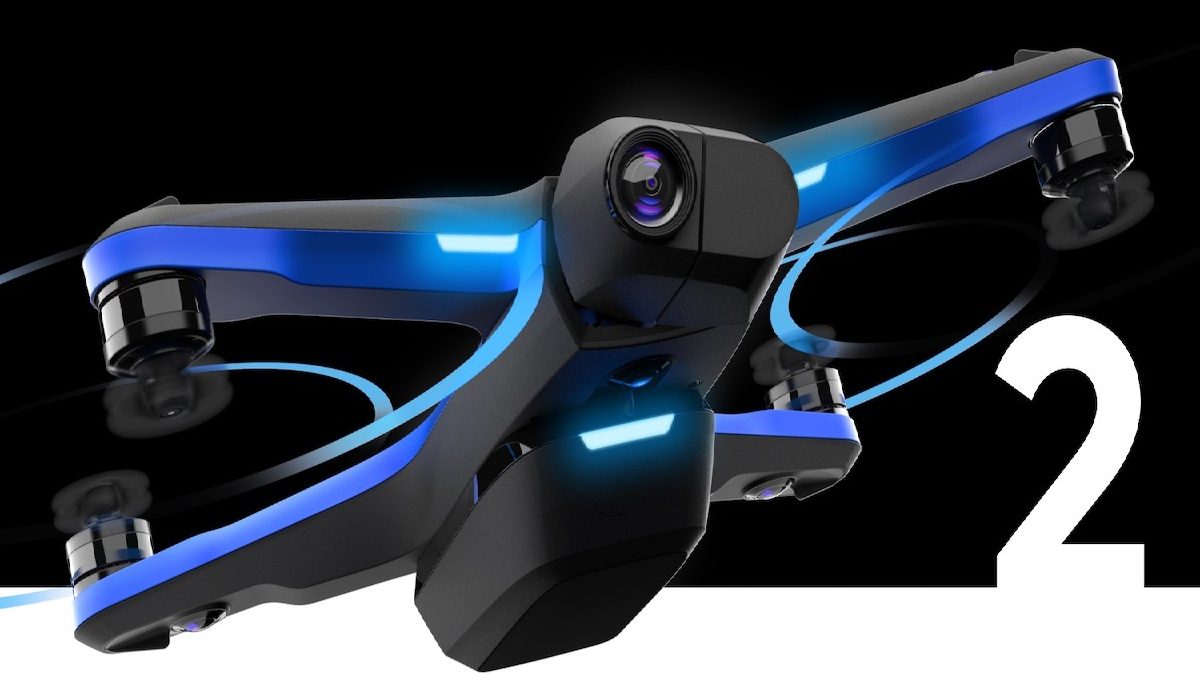Table of Contents
Skydio 2
Here the Skydio 2 is the best drone available for those who want to film themselves on the go. While autonomous flight modes still have some limitations, those limitations are far less than any other drone on the market.
Video Quality

- The Skydio 2’s 4K camera delivers impressively clear and sharp images, significantly improving its predecessor.
- In our tests, the camera of the Skydio 2 always produced high-quality images with good resolution and appealing color composition.
- Under ideal lighting conditions, this footage corresponds to almost all of DJI’s top prosumer models.
- The main weakness of the camera on this drone is in cloudy and low light conditions.
- In these circumstances, the colors can look a little dull and mute if you can even fly the drone (if the drone detects that there isn’t enough light for the obstacle avoidance cameras to work well, it won’t take off).
- The Skydio 2’s camera can record 60 frames per second (fps) at full 4K resolution.
- It means you can get significant slow-motion effects even when shooting in ultra-high definition.
- If you reduce the resolution to 1080p HD, the maximum frame rate increases to 120 fps.
- They allow you to dip your toe in super slow motion territory. There are also standard options for 24 and 30 fps in both resolutions.
Flight Performance
- The autonomous flight performance of the Skydio 2 is first class. Manual flight performance is functional but leaves a lot to be desired.
Manual Flight Performance

- Unless you are purchasing an accessory, you will need to use an app on your phone that uses virtual joysticks to fly the Skydio 2 manually.
- It severely limits both the range and capabilities of the drone and is only helpful for positioning the drone before activating any of the autonomous flight functions.
- When you buy the Skydio controller ($ 149), you get extended range and physical joysticks that allow for much better overall control.
- Here you can also connect your phone to the controller to access a real-time video feed while in flight.
- This setup allows you to move the drone further and get more classic landscape-style drone shots.
- Although the driver specs state that this gives you a range of more than 2 miles, we have found this range much less in practice.
- We have seen video streaming interruptions and even a temporary loss of connection to the drone conveniently less than a kilometre from the controller.
- Even in areas with few physical obstacles and little or no RF interference.
- The shorter joysticks make it much more challenging to perform more acceptable manoeuvres than the longer joysticks found on competitive controllers.
Autonomous Flight Performance
- The Skydio 2 is designed as a solo flying drone, and in that capacity, it is the best in the field. We did skiing, mountain biking, and running.
- In all cases, its autonomous tracking mode kept pace with the subject, contained issues, and avoided obstacles far more skillfully than any other model on the market.
- The drone offers 2 modes with which you can follow a topic autonomously. The first is motion tracking, which continuously tracks a subject from the same angle around the subject’s direction of movement.
E.g., if you set the drone to follow you from behind and then turn around. The drone will quickly come behind you again.
- The second is the fixed track that continues from the starting angle. Regardless of the direction of movement of the subject.
- In this style, if you start with the drone following you from behind and then turn 180 °. It will stay in the same position and continue to follow you, but now from the front.
- It completes its autonomous flight functions with Dronie, Orbit, Cable Cam, Hover (tripod tracking mode), Boomerang and Vortex methods.


